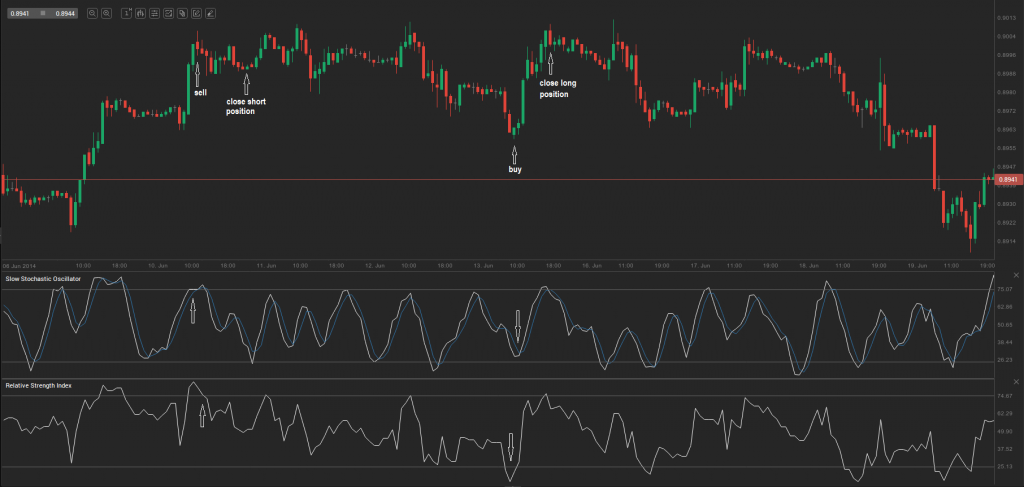Combining the Slow Stochastic and the Relative Strength Index
You will learn about the following concepts
- Indicators used with this strategy
- Signals to be looking for
- Entry point
- Stop-loss
- Profit target
For this strategy we will be examining the 1-hour chart of USD/CHF. The indicators we will be using are the Slow Stochastic Oscillator with settings (5,3,3; Slow K – white; Slow D – blue; overbought – 75.00; oversold – 25.00), the Relative Strength Index with settings (period – 7; overbought – 75.00; oversold – 25.00) and candlestick setups. The objective is to detect possible breakouts.
A trader will usually look for a long entry, when both the Slow Stochastic and the RSI are sold or close to the oversold level (25.00), while there is an uptrend candle (green on the chart below), that has closed at the midpoint of the prior downtrend candle (red on the chart below).
A trader will usually look for a short entry, when both the Slow Stochastic and the RSI are bought or close to the overbought level (75.00), while there is a downtrend candle, that has closed at the midpoint of the prior uptrend candle.
A trader will usually look to exit his/her short trade, when the Slow Stochastic and the RSI are oversold, while an uptrend candle appears and closes at the midpoint of the prior downtrend candle. The trader may immediately reverse to long position.
The opposite is valid for a long trade exit.
Below we visualize examples of one long and one short trades, using the above mentioned trading approach.
